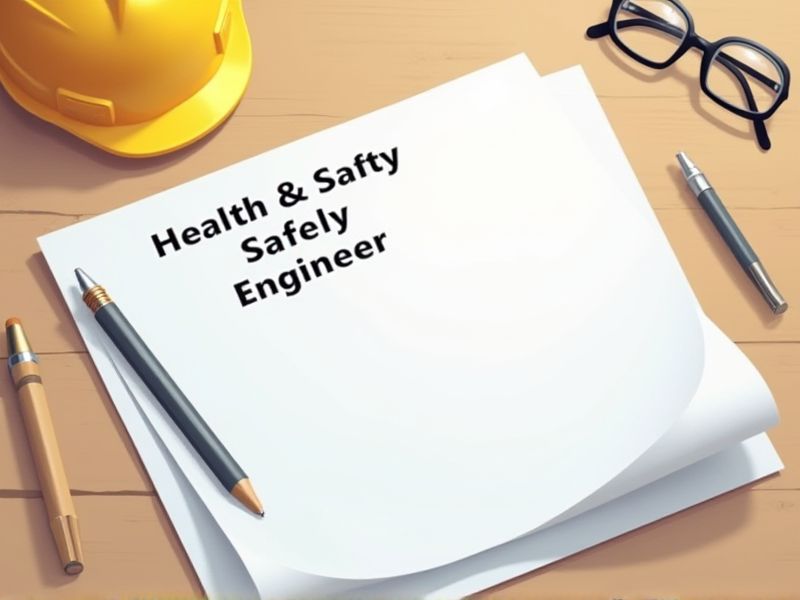
Health and safety engineers play a critical role in preventing workplace injuries and ensuring compliance with safety regulations. Certifications validate their expertise and knowledge in specific health and safety protocols, which is essential for building trust with employers and stakeholders. They also enable engineers to stay current with evolving industry standards and improve their problem-solving skills. Explore these essential certifications for a career as a health and safety engineer.
Certified Safety Professional (CSP)
Obtaining the Certified Safety Professional (CSP) credential enhances a Health and Safety Engineer's knowledge, validating their expertise in the field. This certification often leads to increased job opportunities as many employers prefer candidates with recognized qualifications. A CSP designation can lead to higher salary prospects due to the specialized nature of the skills it represents. Achieving CSP status also demonstrates a commitment to ongoing education and adherence to occupational safety standards, crucial for maintaining workplace safety compliance.
Certified Industrial Hygienist (CIH)
A Certified Industrial Hygienist (CIH) brings specialized knowledge in identifying and mitigating occupational health hazards, which enhances the effectiveness of health and safety programs. This expertise empowers health and safety engineers to implement more comprehensive safety solutions, reducing injury and illness risks in the workplace. Health and safety engineers benefit from a CIH's skills in evaluating and controlling exposure to harmful agents like chemicals and noise, ensuring regulatory compliance. Collaboration with a CIH enhances the ability to anticipate and prevent potential hazards, leading to safer work environments.
Associate Safety Professional (ASP)
Health and Safety Engineers require the Associate Safety Professional (ASP) certification to validate their expertise and commitment to industry standards. The ASP credential provides engineers with crucial knowledge on risk assessment and hazard control, enhancing workplace safety. Certification often leads to increased job opportunities and career advancement. Employers prefer ASP-certified individuals, as this qualification reassures them of an engineer's comprehensive understanding of safety regulations and practices.
Occupational Health and Safety Technologist (OHST)
The presence of an Occupational Health and Safety Technologist (OHST) ensures comprehensive risk assessments are conducted, which aids Health and Safety Engineers in designing safer work environments. OHST professionals bridge the gap between theory and practice by implementing health and safety protocols effectively. They provide real-time data and insights from the field, enabling engineers to make informed safety enhancements. This collaboration enhances compliance with regulatory standards, reducing potential liabilities for organizations.
Construction Health and Safety Technician (CHST)
The Construction Health and Safety Technician (CHST) is instrumental for the Health and Safety Engineer because they ensure compliance with safety regulations on-site, minimizing potential hazards. By providing practical, on-the-ground insights, CHSTs assist engineers in designing safer project plans and modifying them when risks are identified. Their direct involvement in daily site operations aids in the prompt implementation of safety measures, reducing the likelihood of accidents. This collaboration leads to a comprehensive safety strategy, effectively balancing technical design with real-world application.
NEBOSH International General Certificate (NEBOSH IGC)
The NEBOSH International General Certificate (IGC) provides a comprehensive foundation in health and safety principles, crucial for a Health and Safety Engineer's role in mitigating workplace hazards. It is recognized globally, ensuring that engineers are aligned with international safety standards and practices, which is vital for multinational operations. The certification equips professionals with legal frameworks and practical skills to effectively evaluate and manage risks, a core responsibility in this field. Employers value the NEBOSH IGC as it demonstrates an engineer's commitment to maintaining high standards of safety, critical for reducing incidents and maintaining compliance with regulations.
OSHA 30-Hour Training Certification
The OSHA 30-Hour Training Certification provides Health and Safety Engineers with comprehensive knowledge of workplace safety protocols, reducing the likelihood of workplace incidents. Acquiring this certification enables engineers to identify and mitigate potential hazards efficiently, promoting a safer work environment. This training enhances compliance with federal safety regulations, thereby minimizing legal liabilities for organizations. Employers value this certification as it reflects an engineer's commitment to maintaining high safety standards in all operations.
Certified Hazardous Materials Manager (CHMM)
A Certified Hazardous Materials Manager (CHMM) provides specialized knowledge in managing hazardous materials, reducing workplace risks for health and safety engineers. The certification ensures expertise in regulatory compliance, which helps maintain legal safety standards in industrial settings. Having a CHMM on board enhances the ability to develop efficient safety protocols, minimizing hazardous exposure to workers. Collaboration with a CHMM also aids in emergency response planning, critical for mitigating potential hazards promptly.
Certified Environmental, Safety, and Health Trainer (CET)
The role of a Certified Environmental, Safety, and Health Trainer (CET) significantly enhances the competence of a Health and Safety Engineer by providing specialized training skills essential for effective safety management. As regulations and compliance standards become increasingly complex, a CET enables engineers to stay current, reducing workplace hazards and ensuring adherence to legal requirements. CET training equips engineers with the ability to effectively communicate and implement safety protocols among diverse teams, leading to a cohesive safety culture. Employers also see a reduction in incident-related costs through professionally delivered and standardized training methodologies that CETs provide.
First Aid and CPR/AED Certification
Health and Safety Engineers require First Aid and CPR/AED certification because they often design protocols to ensure workplace safety and need to respond to emergencies effectively. This certification equips them with the skills to provide immediate care, potentially preventing serious injuries or fatalities in hazardous situations. Recognizing and managing risks associated with health emergencies enhances their ability to create safer environments. Employers may prefer or mandate this certification to ensure comprehensive safety measures on-site.
Summary
When you obtain certifications as a Health and Safety Engineer, you often enhance your knowledge and skills, increasing your marketability. This can lead to better job opportunities and potentially higher salaries. Employers may see your certification as a commitment to maintaining industry standards, thus building trust in your capabilities. As a result, you may find yourself better equipped to effectively identify workplace hazards and implement safety protocols.
